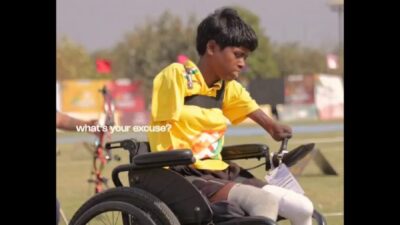Last week at the All England Club, a calm and focused Jack Draper stepped onto No. 1 Court, not for a match, but for something far more essential to his transformation — a session with his breathing coach, Ann Coxhead. To casual onlookers, the sight was unusual. Draper, Britain’s No.1 tennis hope at Wimbledon, sat quietly with his eyes closed and his head bowed, while Coxhead stood behind him, gently applying pressure to his chest. But to those familiar with his journey, it marked the culmination of months of internal evolution — a silent revolution that might be the difference between talent unfulfilled and legacy cemented.
At just 23, Draper’s career has already been a tale of promise, setbacks, and quiet perseverance. Known for his powerful serve and aggressive groundstrokes, Draper has battled opponents on court with the intensity expected of a future Grand Slam champion. But off court, his real battles have been against his own body — and mind.

Jack-Draper-has-had-anxiety-issues-and-suffered-from-sinuses-as-he-used-to-breathe-from-mouth.
A Hidden Struggle: Sinus and Anxiety
Until recently, Draper suffered from chronic sinus problems, which meant he often breathed through his mouth. This not only affected his stamina and physical performance but also compromised his mental focus — something critical in a sport where margins are minuscule.
“Until last year, I was always a mouth breather,” Draper admitted during a press conference at Wimbledon. “I didn’t even realize how much it was affecting me — on court, in training, even just walking around. It wasn’t just physical fatigue; it was mental too. I’d feel lightheaded, anxious, like I wasn’t fully present.”
Breathing through the mouth, especially during high-intensity matches, limits the efficiency of oxygen intake and disrupts the natural rhythm of the body. It also leaves athletes more vulnerable to exhaustion and emotional fluctuations — particularly dangerous in tennis, a game of relentless rallies and punishing sets.
Coupled with the sinus issues, Draper also struggled with anxiety. This wasn’t just the ordinary pre-match nerves. At the 2024 US Open, during a high-stakes semifinal against Jannik Sinner, Draper’s anxiety spiraled to the point of physical illness.
“I remember that day so clearly,” Draper said. “I had felt fine leading up to the match. But once I got on court, it just hit me. The occasion, the pressure, the expectations. I felt like I couldn’t breathe properly. My stomach turned. I actually vomited three times during that match. But I didn’t want to quit. I lost in straight sets — 7-5, 7-6, 6-3 — but the mental battle was tougher than anything Sinner threw at me.”

“Until-last-year- I-was-always-a-mouth-breather,- Draper-admitted-during-a-press-conference-at-Wimbledon.
Meeting Ann Coxhead: A Turning Point
Everything began to shift when Draper met Ann Coxhead, a veteran breathing specialist known for her work across multiple sports disciplines. What began as a trial quickly turned into a vital part of Draper’s training.
“She came in with such clarity and calm,” Draper said. “Ann told me something that stuck with me: ‘Your breath is the only thing you truly control on court.’ That was powerful. We started working together consistently, and she taught me techniques to open up my nasal pathways, to breathe efficiently through my nose, to slow down and anchor myself in pressure moments.”
Coxhead’s method is holistic. It incorporates elements of sports science, yoga, psychology, and bodywork — using breath as the central thread connecting it all. In Draper’s case, her role has been as essential as that of his strength coach or physiotherapist.
“The work I’ve done with her has been invaluable,” Draper shared. “It’s not just about breathing better. It’s about being in control of myself, staying calm when everything is on the line. I’ve noticed big improvements in my stamina, my shot selection, even how I recover between points. It’s a subtle edge, but in elite tennis, those tiny differences decide matches.”

Coxhead’s-method-is-holistic.-It-incorporates-elements-of-sports-science- yoga,-psychology,-and-bodywork
From Physical Weakness to Mental Fortitude
The results are visible. In the past year, Draper’s physical transformation has been matched by a mental steadiness that has impressed fans and commentators alike. Where once his matches were marked by sudden dips and emotional outbursts, he now carries an air of quiet resilience.
At Wimbledon this year, Draper’s opening round match against Argentina’s Sebastian Baez was a test of patience and poise. Though Draper won in four sets, it was the way he carried himself — unhurried, focused, measured — that spoke volumes about his progress.
“Jack seems more centered now,” said Tim Henman, former British No.1 and a BBC commentator. “You can tell he’s found something that grounds him. And if breathing is his anchor, then credit to him for exploring that path.”

Draper’s-opening-round-match-against-Argentina’s-Sebastian-Baez-was-a-test-of-patience-and-poise.
Anxiety in the Shadows of Success
Draper’s honesty about his anxiety issues also marks a refreshing change in the culture of elite sport, which often downplays mental health. In the post-match interview at the US Open last year, his candor was both startling and inspiring.
“I’m definitely someone who is, I think, quite an anxious human being,” he had said. “Even when I look calm on the outside, there’s a storm inside. That day against Sinner, it all just built up. I didn’t have problems before the match, but once it started, I felt nausea and sick. I didn’t want to leave the match. I didn’t want people to say I wasn’t strong enough mentally. But it was tough.”
This openness has made Draper a relatable figure, especially among young fans and aspiring athletes who deal with similar issues but rarely hear their heroes speak about them.
“I want people to know it’s okay,” Draper said recently. “You can be a professional athlete and still feel anxious. It doesn’t mean you’re weak. What matters is how you manage it — and for me, breathing is the key.”

Jack-Draper-survives-anxiety-attack-in-Australian-Open-win-before-vomiting-courtside
Looking Ahead: Breathing Room for Greatness
As Wimbledon unfolds, Draper remains Britain’s brightest hope on the men’s side. While his game continues to evolve — backed by improved fitness, tactical maturity, and growing experience — it’s the intangible qualities that might be his greatest asset: emotional self-regulation, body awareness, and a new relationship with pressure.
“My journey is still ongoing,” he said. “I’m not claiming I’ve solved everything. But I know I’m moving in the right direction. I want to enjoy tennis, not just endure it.”
Ann Coxhead remains a constant presence — sometimes in the player’s box, other times on the practice court, always watching, always guiding. The trust between them is unspoken but visible.
“It’s a bit like having a physio or a strength coach,” Draper concluded. “There are such fine margins in tennis — even a 1% improvement can make the difference. And what Ann has brought to me is way more than 1%.”
Click here to watch more!



















Comments